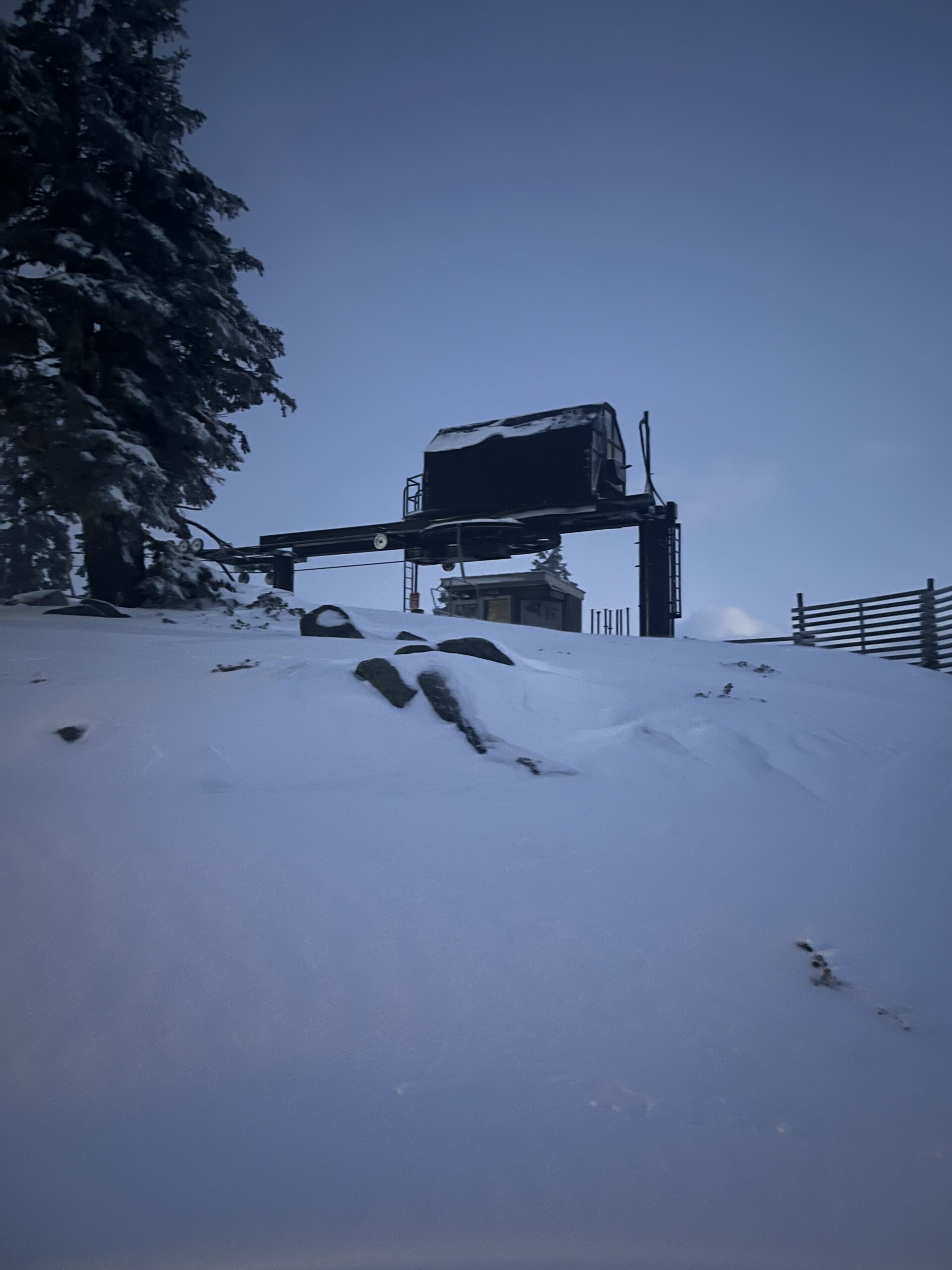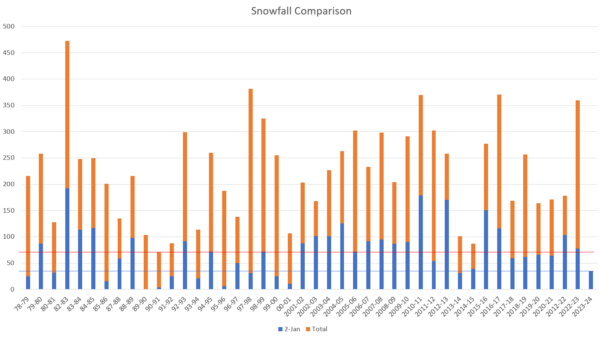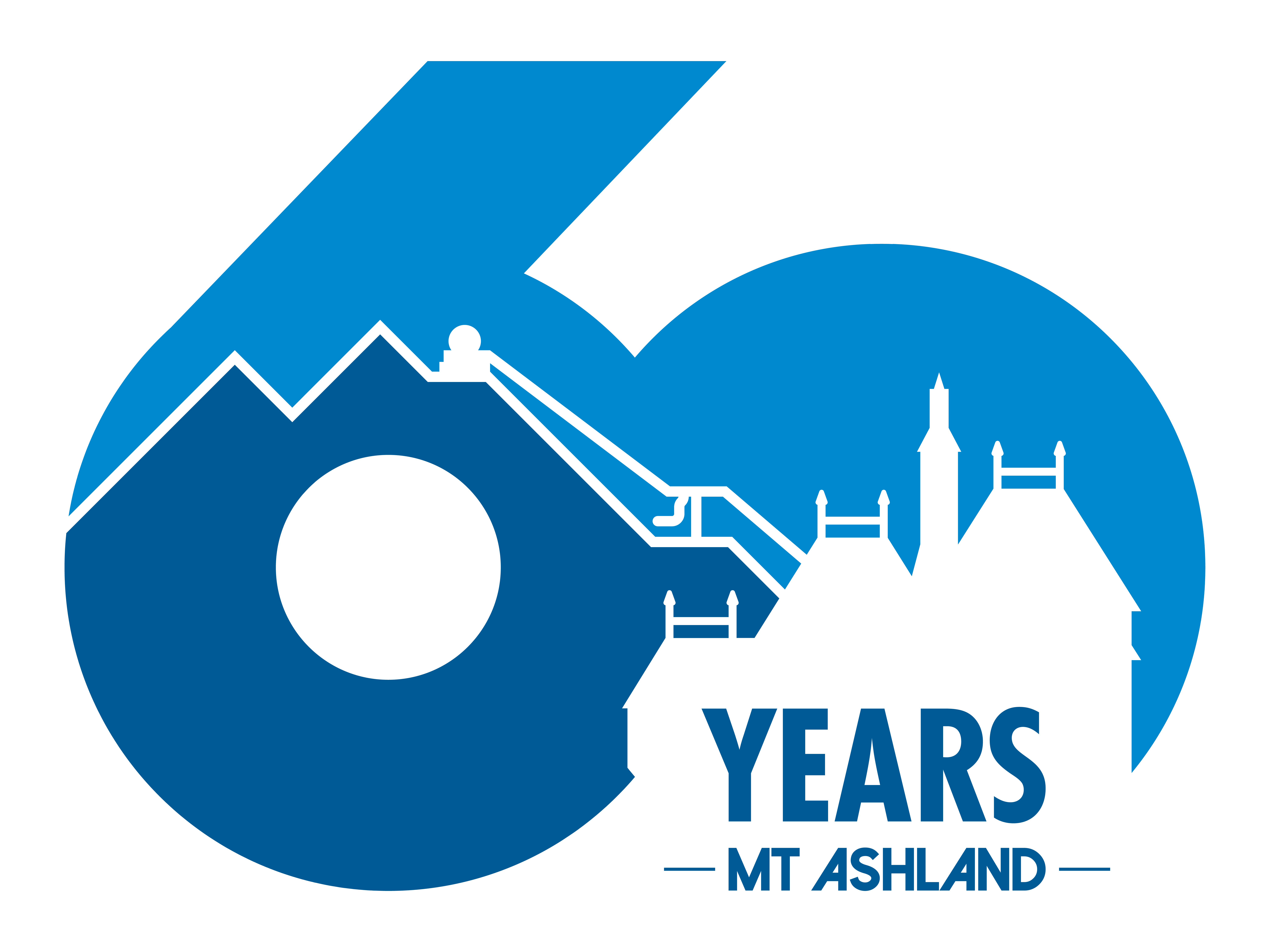
Where is the Snow?
Throughout December many of you, like me, were glued to the forecast and in despair as the days went by and Mother Nature didn’t help us out with early season snow. Now, almost a week into January we are seeing much colder temperatures and getting a few inches of new snow every few days. Yet still the lifts sit idle, the parking lot is empty, and the lodge feels lonely. Last week we spent a day with the New York Times as they put together a story about lower snowpack in the west and impacts on ski areas. But- as I write this, a storm looms on the horizon and forecasts look optimistic for an opening in the near future. While we do our snow dances I wanted to talk about what’s “normal” and how this winter compares to the average. And, answer some questions about snowmaking on Mt. Ashland.
Mt. Ashland historically has the strongest snowfall later in the season- February and March. There have been some years when there have been big storms early that allow for November openings, and we are always ready to open by Thanksgiving if Ullr provides. Generally, our estimated opening date is the 2nd Saturday in December. This year we only received 32″ of snow in December, and the majority of that melted away in rain and warmer temperatures. But, how often does that happen? We have daily snowfall information for 44 seasons, going back as far as 1978. In those years, 12 seasons had less snowfall in December than we have this year. So, 27% of winters we’ve documented have had ever slower starts than this current one. And operationally, Mt. Ashland does not open in December about 1/3 of the time. Although it’s disappointing to not have opened in December, it’s just the nature of our mountain.
Here’s an interesting tidbit…of the years that had slower starts than this year, 4 of those season ended in over 250″ and 1 year (1997-98) was one of our biggest years ever with over 350″ by the time spring arrived. There’s no telling what the next few months will look like, but all is certainly not lost.

A question that many of you have asked recently is about snowmaking on Mt. Ashland. Having a good snowmaking system can assist ski areas in earlier openings and maintaining consistent conditions during dry spells. Snowmaking on Mt. Ashland is not possible in the foreseeable future. This type of effort takes an incredible amount of energy and water. And for us, water is the primary challenge. First is a need to store water, and most snowmaking reservoirs are 3 million gallons to start up to 10 million gallons or more. There are few, if any, spots in our permit area that would be suitable for a pond of this size. Second, and even more important, is the ability to use water. Mt. Ashland has water rights for use of only 5,000 gallons per day. On a busy weekend day, this is barely enough to wash dishes and flush toilets. I mentioned that snowmaking uses a lot of water, but how much? A single snowmaking gun typically uses about 100 gallons of water per minute. So, our entire daily water rights is only enough to run a single gun for 50 minutes. An average snowmaking system will have about 4 guns on a trail the size of Romeo, and operate for 8 or more hours per day. So doing the math, that would be 192,000 gallons of water per day on just 1 trail….38 times our current daily allowance. It is for these reasons that we do not have snowmaking.
Things look really optimistic right now. We have up to 11″ of snow on the ground, so only need another foot and half or so to get some terrain open. Keep up those snow dances, and I’ll see you on the mountain soon!
